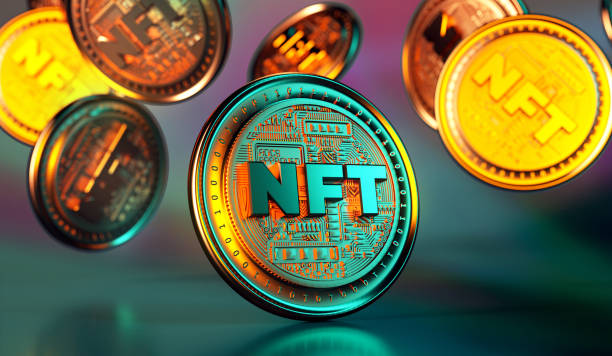In the sweeping digital age, where the line between the virtual and real world blurs more each day, Non-Fungible Tokens, or NFTs, have emerged as a groundbreaking concept, confusing and exciting in equal measure. But what exactly are these digital phenomena, and why is everyone from your favorite artist to the biggest tech moguls talking about them? Dive into this comprehensive guide to shed light on NFTs, understand their impact, and maybe, just maybe, figure out why they matter to you.
1. The ABCs of NFTs: Breaking Down the Basics
a. What Exactly Are NFTs?
At its core, an NFT is a digital asset representing real-world objects like art, music, in-game items, and videos. They are bought and sold online, frequently with cryptocurrency, and they are generally encoded with the same underlying software as many cryptos. Unlike traditional cryptocurrencies such as Bitcoin, NFTs are unique—or “non-fungible”, to get technical—meaning you can’t exchange one NFT for another like you can with dollars or gold bars. This uniqueness offers a digital certificate of ownership for any piece of digital media, making them immensely valuable to collectors and creators alike.
b. How Do NFTs Work?
NFTs exist on a blockchain, which is a distributed public ledger that records transactions. You’re likely most familiar with blockchain as the underlying process that makes cryptocurrencies possible. Essentially, the blockchain serves as the backbone of NFTs, ensuring their uniqueness and ownership by recording the details of their transactions in an unalterable way. Minting, buying, or selling NFTs involves interacting with this blockchain to transfer ownership or create new tokens, which can be as easy as clicking a button on an NFT market platform but involves complex processes behind the scenes.
c. Different Types of NFTs
NFTs can really be anything digital (such as drawings, music, your brain downloaded and turned into an AI), but a lot of the current excitement is around using the tech to sell digital art. You might have seen headlines about digital art pieces being sold for millions or virtual land in online environments (metaverses) fetching eye-watering sums. From NBA Top Shots selling collectible highlights, to artists like Beeple making history with record-breaking sales, NFTs are making their mark across various domains.
2. The Rise of NFTs: A Timeline of Growth
a. Historical Milestones
The concept of NFTs has been around for a while, with the first projects such as Colored Coins on the Bitcoin blockchain emerging in the early 2010s. However, NFTs came into the limelight with the launch of Ethereum, which created a more robust framework for these tokens through its ERC-721 standard. One of the most pivotal moments in NFT history was the creation and sale of “Everydays: The First 5000 Days” by Beeple, sold at Christie’s for an astonishing $69 million.
b. Factors Fueling the Popularity of NFTs
Celebrity endorsements have certainly helped propel NFTs into the mainstream. From music legends like Deadmau5 and Grimes to sports icons selling digital collectibles, high-profile endorsements have validated the concept and attracted a flurry of interest. Moreover, as digital natives seek more personal and authentic connections with artists and creators, NFTs have emerged as a new canvas for this interaction.
c. Market Trends and Financial Implications
NFT sales have skyrocketed, with total sales volume hitting billions of dollars. Though the market experiences volatility, the sheer scale of growth and interest has led many to see NFTs as more than just a passing trend. Record sales have continued to make headlines, underscoring the financial implications not just for artists and creators but for investors and collectors as well.
3. NFTs Beyond the Hype: Real-World Applications and Benefits
a. Empowering Artists and Creators
One of the most profound impacts of NFTs is on artists and creators. By offering a platform to sell their work directly to a global audience without the need for intermediaries, artists can enjoy a larger share of the profits while cementing their rights to the work through blockchain. Additionally, NFTs provide a way for creators to receive perpetual royalties automatically, something traditional art sales can rarely offer.
b. Innovations in Digital Ownership and Collection
The digital collectibles market has exploded, with everything from trading cards to virtual patches of land being tokenized as NFTs. This shift not only transforms how we think about collecting but also opens new avenues for digital ownership and speculative investment. Virtual real estate, for example, offers a compelling glimpse into how NFTs can redefine property rights in digital spaces.
c. Potential in Various Industries
Beyond art and collectibles, NFTs are making waves in industries like gaming, where they enable players to own unique in-game items. In fashion, brands are exploring virtual clothing NFTs for avatars in digital spaces. The sports industry is also capitalizing on this trend through collectible highlights, tickets, and exclusive fan experiences.
4. Critical Perspectives: Challenges and Controversies Surrounding NFTs
a. Environmental Concerns
One cannot discuss NFTs without addressing the elephant in the room—their environmental impact. The computational power required to process transactions on the blockchain consumes an enormous amount of energy, leading to a significant carbon footprint. However, there’s a growing push towards more sustainable practices, including the development of more energy-efficient blockchains.
b. Fraud and Security Issues
As with anything valuable, NFTs are not immune to fraud and security risks. Issues like counterfeit NFTs and copyright infringement pose real challenges, necessitating robust verification processes and buyer diligence. The NFT community is continually developing solutions, but awareness and caution remain key.
c. The Bubble Debate
Finally, the question on many minds—is the NFT boom sustainable, or is it a bubble waiting to burst? Perspectives vary widely, with some viewing NFTs as a speculative frenzy divorced from real-world value, while others see them as a legitimate evolution of digital ownership and creativity’s future.
5. The Future of NFTs: Evolving Technologies and Trends
a. Technological Innovations Shaping the Future of NFTs
Blockchain technology is evolving, with advancements aimed at addressing current limitations around scalability, energy consumption, and security. Moreover, the integration of NFTs with technologies like augmented reality (AR), virtual reality (VR), and artificial intelligence (AI) is opening up new frontiers for immersive, interactive digital experiences.
b. Predictions and Potential Future Applications
The potential applications for NFTs are vast and varied. From revolutionizing digital identity verification to enabling a new era of digital asset management, the possibilities are as limitless as the imagination. As technology progresses, we’ll likely see NFTs become a staple in more industries, further blurring the lines between the digital and physical worlds.
c. Legal and Regulatory Outlook
As NFTs continue to gain prominence, legal and regulatory frameworks are emerging to address the unique challenges they present. From copyright issues to consumer protection, the landscape is rapidly evolving. Staying informed and compliant will be crucial for anyone looking to explore this space.
Conclusion
From transforming the art market to reshaping digital ownership, NFTs are more than just a buzzword—they’re a glimpse into the future of how we create, share, and value digital content. While challenges and controversies remain, the potential for innovation and genuine connection in the digital space is undeniable. As we stand on the brink of this new digital frontier, it’s clear that NFTs are not just here to stay; they’re here to change the game.
FAQs
What makes an NFT valuable?An NFT’s value is subjective, often deriving from its uniqueness, the creator’s fame, and the emotional or cultural significance to the buyer.
Can NFTs be considered a good investment?Like any investment, NFTs carry risk. Their market is volatile and speculative, so do your research and consider your appetite for risk before diving in.
How can someone create or buy an NFT?Creating or buying NFTs typically involves setting up a digital wallet, purchasing some cryptocurrency, and transacting on an NFT marketplace.
Are there any risks involved in dealing with NFTs?Yes, from environmental concerns to fraud and the potential for loss of value, NFTs come with their share of risks.
How do NFTs impact copyright and intellectual property rights?NFTs can affirm an artist’s copyright over their work, but the legal landscape is still evolving. It’s important to understand the specifics of each platform and transaction.

